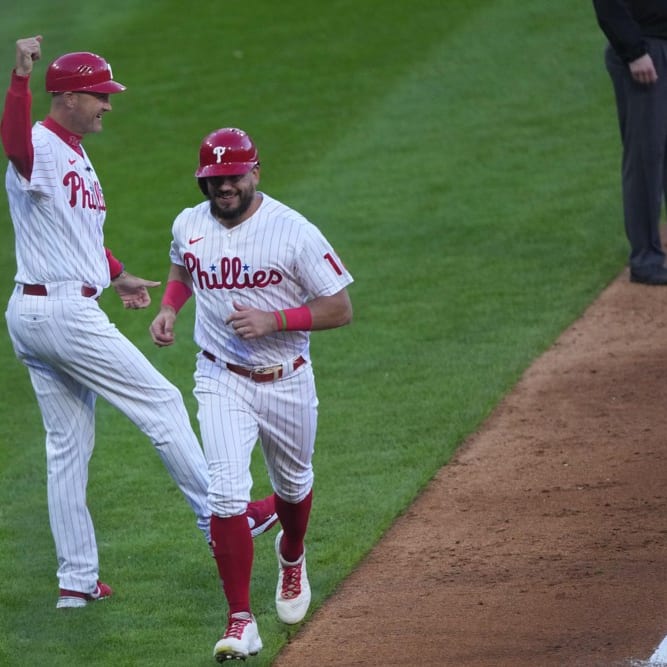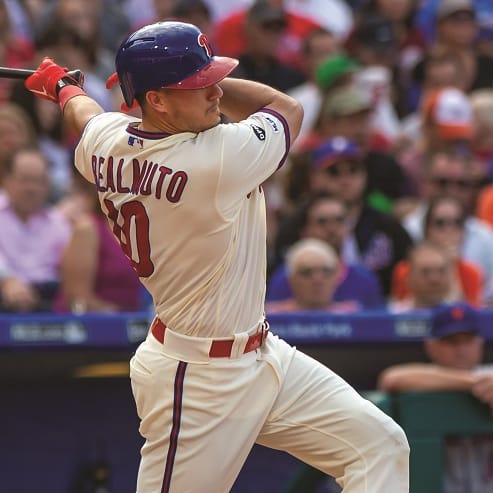This article is part of our The Z Files series.
We'll begin with a mini-rant. Regardless if you listen to the broadcast on SiriusXM Fantasy, follow along on Twitter or read the various postmortems, the word "value" will be prominently featured. Say it with me: IT'S NOT VALUE, IT'S POTENTIAL.
Value is either past or future. Value has happened or will happen. Something that's going to happen is potential.
There will be a purchase referenced as great values. How do we know? What we know is the purchase was for a lower price than expected. We don't know if it is a great value. It doesn't matter if you pay $35 or $42 for a player the market pegs at $40. If he earns $10, you both suffer.
The same is true for a snake draft. Picks are constantly called value picks. No, they're simply picks taken after the average draft position. The pick may have a chance to turn a profit, but until the season ends, it's still potential.
Here's a fun exercise. Every time you hear or read "value", in your head substitute "potential". It's scary how often the latter makes so much more sense.
OK, enough of that. If you play the auction format, you no doubt have
We'll begin with a mini-rant. Regardless if you listen to the broadcast on SiriusXM Fantasy, follow along on Twitter or read the various postmortems, the word "value" will be prominently featured. Say it with me: IT'S NOT VALUE, IT'S POTENTIAL.
Value is either past or future. Value has happened or will happen. Something that's going to happen is potential.
There will be a purchase referenced as great values. How do we know? What we know is the purchase was for a lower price than expected. We don't know if it is a great value. It doesn't matter if you pay $35 or $42 for a player the market pegs at $40. If he earns $10, you both suffer.
The same is true for a snake draft. Picks are constantly called value picks. No, they're simply picks taken after the average draft position. The pick may have a chance to turn a profit, but until the season ends, it's still potential.
Here's a fun exercise. Every time you hear or read "value", in your head substitute "potential". It's scary how often the latter makes so much more sense.
OK, enough of that. If you play the auction format, you no doubt have some bid values... err... a list of projected earnings for each player. Conventionally, the worst players are priced at $1 and everyone is scaled upward, with exactly ample players with a positive number to legally fill everyone's roster. However, something curious always happens. The number of players sold for $1-$3 ALWAYS exceeds that dictated by the black-box generated bid list.
Let's take a look at the end-game of some 15-team mixed auctions. The National Fantasy Baseball Championship is offering on-line satellite auction leagues. Eight have been completed. As alluded to, the LABR auctions are single league formats with 12 teams but what follows transcends all formats. The extent may be different, but the dynamic is universal.
A total of 345 players are up for auction. Here's the average number of $1, $2 and $3 players that were purchased in these auctions along with the number projected by conventional valuation systems:
| BID | BOUGHT | PROJECTED |
| $1 | 54 | 29 |
| $2 | 24 | 18 |
| $3 | 19 | 12 |
Download the projected dollar values for 12-team American League and National League only formats and count the number of $1-$3 purchases in LABR. The number will exceed that which is projected. Take it to the bank.
Doing some math, the 97 purchases of $3 or less cost an average of $159. According to the bid price list, they should cost $257. The leagues saved almost $100 in the end game. Where did it go?
The following is a table that shows the number of purchases against the number of players priced in specific ranges:
| BID | BOUGHT | PROJECTED |
| $41+ | 4 | 1 |
| $31-$40 | 19 | 12 |
| $21-$30 | 38 | 40 |
| $16-$20 | 36 | 40 |
| $11-$15 | 45 | 63 |
| $7-$10 | 59 | 42 |
| $4-$6 | 47 | 88 |
| $1-$3 | 97 | 59 |
As you likely intuit, some of the missing $100 is spent on the top players. On the average, 23 players cost more than $30 while only 13 were priced in that range.
From $16-$30, the two ranges are pretty close. According to the above, 97 players were bought for $16 or more while 93 are priced as such. That's basically a wash.
Then something interesting happens. Look at the next two ranges. Eighteen more players were priced from $11 to $15 than were purchased. This was immediately balanced as 17 fewer players were priced from $7 to $10 than were bought.
What generally happens is not everyone in the league can afford to pay $11 to $15 at that portion of the auction so many of those players are sold for $7 to $10.
The number players priced $6 and lower basically match the number purchased in that range.
Keep in mind that the above numbers are not absolute in that everyone has a different expectation and a different bid price for each player, so the actual players can jump between ranges. However, looking at the numbers in this manner does provide a general road map of how auctions unfold. The good auction strategist will use the above to find the soft spot in pricing along with acquiring players they favor at below market pricing.
Speaking of strategy, there isn't any single plan that is best. One can look at the above data and conclude it's perfectly viable to spend more for players at the top since they can make up for it in the end game. Others will focus on the $16-$30 range, staying close to their chalk price then joining the end game. And, of course, everyone picks up the aforementioned players they like more than the market interspersed with the other purchases.
Here's another big-picture auction dynamic that feeds into end game and overall strategy. In the eight auction sample, only 277 players were picked in all eight leagues. On the flip-side, 41 players were purchased by only one owner spanning all eight leagues. The message here is not only do we all have different expectations, we all have a different view of the draft-worthy pool.
This table shows how many players were picked in the different number of leagues:
| LEAGUES | PLAYERS |
| 8 | 277 |
| 7 | 21 |
| 6 | 12 |
| 5 | 17 |
| 4 | 13 |
| 3 | 21 |
| 2 | 38 |
| 1 | 41 |
One hundred players are on a roster in three or fewer leagues. That's huge. This further hammers home the notion that we all rank players differently. There's a very good chance you price several players above $3 that everyone else considers end-gamers - if worthy of a roster spot in the first place. This is a major reason why, other than money management, that so many more players are bought in the end game than are priced as such. Or maybe, some manage their money knowing this and take advantage by paying what it takes to secure the services of the upper echelon players.
The purpose of today's discussion isn't to recommend one strategy over another, we'll leave that for another day. Knowing the general flow of an auction helps understand what some of the participants are trying to accomplish and makes it more engaging to follow along and analyze the proceedings.
Enjoy the LABR auctions this weekend. But instead of focusing on the prices and using those as a guide, think about how each participant is handling the bidding within the parameters outlined above and how that influence how you'll approach your own auctions.
And remember, it's not value, it's potential.










